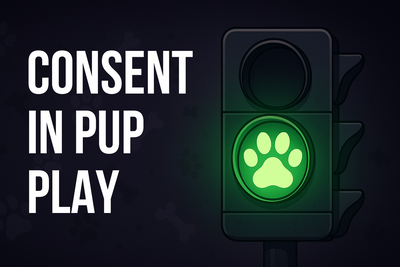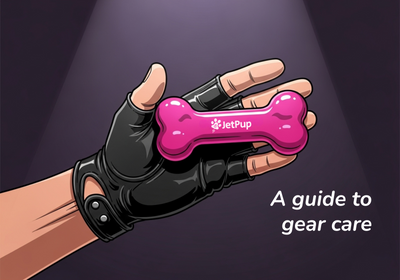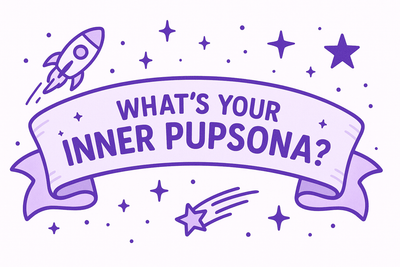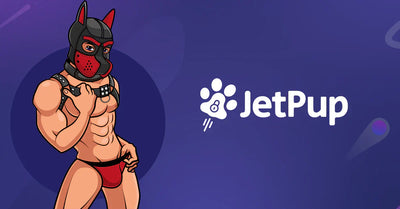When people think of self-care, they often imagine activities like bubble baths, yoga sessions or perhaps turning off their phones and indulging in a face mask. But what if self-care could also involve chasing a ball, gnawing on a chew toy and receiving plenty of belly rubs?
Sounds whimsical? Maybe.
But for a growing number of individuals, pup play is a powerful form of self-expression, and yes, self-care.
What Exactly Is Pup Play?
At its core, pup play is a type of roleplay where someone adopts the personality or mindset of a dog or puppy. This might include:
-
Wearing a tail, collar, pup hood or ears
-
Crawling on all fours
-
Barking, nuzzling, cuddling
-
Playing with chew toys or squeaky toys
-
Enjoying fetch, tug-of-war or simply lying in someone’s lap
-
Interacting with a “handler” (a caring partner or guide)
-
Being part of a community of pups and handlers
While pup play is often associated with kink or fetish scenes, it’s not always sexual. For many, it’s about comfort, play and emotional safety. For others, it may include erotic elements, offering a space to explore sexuality in a mindful and consensual way. Both experiences are valid. Whether playful or sensual, pup play can be a meaningful form of self-care, helping people feel more connected to themselves and others.
A Brief History of Pup Play
Pup play has its roots in the BDSM and leather communities, emerging prominently in the 1980s. Over time, it evolved beyond its initial confines, becoming a space for individuals to explore aspects of identity, connection and emotional release. Today, pup play is a diverse and inclusive subculture, welcoming people from various backgrounds who seek a unique form of self-expression and community.
Why Pup Play Can Be Self-Care
Pup play might look unusual from the outside, but it meets many of the same needs that traditional self-care practices aim to support. It can help with:
-
Stress relief
-
Emotional expression
-
Sexual exploration
-
Connection and affection
-
Feeling seen, accepted and loved
Let’s delve deeper.
-
A Break from the Human World
Life is stressful. Expectations, deadlines, responsibilities:they pile up. Pup play offers a way to step out of all that for a while.
When someone drops into “pup headspace” they get to let go of worries and just be playful, instinctual, present.
No pressure. No performance. Just chew toys, cuddles and being fully in the moment. -
Reconnecting with Play
Most adults forget how to play. And honestly? That’s a loss. Play helps regulate our emotions, build trust and lighten the load we carry every day.
Pup play invites people to reconnect with that carefree, silly part of themselves and that kind of joy can be deeply healing. -
Inner Child Healing
For some pups, this goes even deeper. Maybe they grew up in environments where softness or vulnerability wasn’t safe.
Through pup play, they create a new story, one where being cuddly, needy or playful is welcomed and loved. That’s not just roleplay. That’s emotional repair. -
Safe Touch, Movement and Comfort
Being petted, hugged or even just curled up next to someone can calm the nervous system. Pup play often includes lots of non-sexual touch, gentle physicality and soothing routines.
Plus, crawling and rolling around gets the body moving, which we all know is good for mental health too.
For those who incorporate erotic dynamics, sexual expression within pup play can also bring stress relief, intimacy and a deeper understanding of self. In the right context, kink is care. -
Community & Belonging
One of the most beautiful parts of pup culture is the community. Whether it’s a close-knit pack, online group chats or in-person meetups, pups often find deep acceptance and friendship.
And in a world where so many feel disconnected, that sense of belonging can be life-saving.
The Gear That Enhances the Experience
An essential part of pup play is the gear. Not just for aesthetics but for helping pups fully embrace their identity and drop into headspace. Whether playful, nurturing or erotic, gear helps bridge the emotional and sensory worlds.
Some common items include:
-
Chew toys: More than playful accessories, chew toys are grounding tools that soothe and focus. Explore our hand-picked chew toys here.
-
Collars: Whether symbolic or part of a dynamic, collars help many pups feel connected and cared for. Find your perfect collar.
-
Pup hoods: Slipping on a hood helps many pups shift out of their “human headspace.” It can mute external noise, deepen roleplay and create a safe emotional boundary for exploration.
-
Tails and ears: These complete the transformation visually and emotionally. A wagging tail or floppy ears can help you feel seen and playful even without saying a word.
The Psychological Perspective
Engaging in pup play can lead to a state of “flow,” where individuals are fully immersed in the activity, leading to increased happiness and reduced anxiety. This state is often achieved through non-verbal communication, physical movement and the relinquishing of human responsibilities.
It can also offer a space to explore identity, connection, sexuality and vulnerability in ways that are rarely accessible in day-to-day life.
Final Thoughts
Self-care doesn’t have to look like what we see on wellness influencers’ Instagram pages. Sometimes, it’s playful. Sometimes, it’s primal. Sometimes, it’s a little weird. And sometimes, it involves a tail and a bark.
Pup play is more than a role. It’s a way to reconnect with your body, your emotions, your joy, your sexuality and your chosen family. So next time someone says “go take care of yourself,” just know: for some people, that means turning into a pup. And that’s okay.






